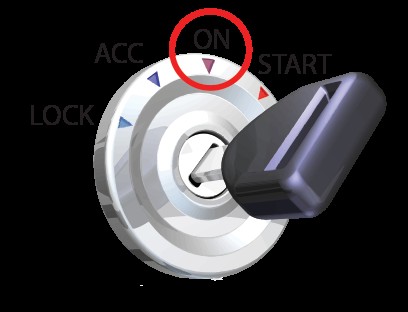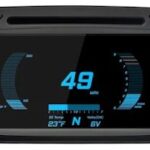Modern vehicles are complex machines, and understanding their inner workings can be daunting. Fortunately, tools like Bluetooth OBD2 scanners and laptops have made vehicle diagnostics more accessible than ever. If you’re wondering, “how can I use a Bluetooth OBD2 with laptop?”, you’ve come to the right place. This comprehensive guide will walk you through the process, enabling you to tap into your car’s onboard computer for valuable insights into its health and performance.
Step 1: Enabling Bluetooth on Your Laptop
Before you can establish a connection with your OBD2 scanner, ensure your laptop’s Bluetooth is active. Most modern laptops come with built-in Bluetooth capabilities.
-
For Built-in Bluetooth: Typically, you can enable Bluetooth through your operating system’s settings. In Windows, this is usually found in the ‘Settings’ menu under ‘Devices’ and then ‘Bluetooth & other devices’. Toggle the Bluetooth switch to the ‘On’ position. Refer to your laptop’s manual for specific instructions if needed.
-
For USB Bluetooth Adapters: If your laptop doesn’t have built-in Bluetooth, a USB Bluetooth adapter is a simple solution. Plug the adapter into an available USB port. Windows should automatically detect and install generic drivers. If drivers are not automatically installed, consult the adapter’s manufacturer instructions for driver installation.
Step 2: Locating the OBD-II Diagnostic Connector in Your Vehicle
The OBD-II (On-Board Diagnostics II) port is a standardized connector in all modern cars and light trucks, typically mandated in vehicles manufactured from 1996 onwards in the USA. This port is the gateway to accessing your vehicle’s diagnostic data.
Finding the OBD-II port is usually straightforward:
- Common Location: The most frequent location is under the dashboard on the driver’s side, often below the steering column.
- Check Under Dash Area: Look for a 16-pin, trapezoid-shaped connector. It might be exposed or hidden by a small plastic cover.
- Possible Concealment: In some vehicles, it can be behind an ashtray, coin tray, or a small panel. Check your vehicle’s owner’s manual if you are having trouble locating it.
Step 3: Plugging in Your Bluetooth OBD2 Adapter
With the OBD-II port located, it’s time to connect your Bluetooth OBD2 adapter.
- Secure Connection: Align the adapter with the OBD-II port and gently push it in. It should fit snugly without excessive force.
- Power Indication: Once properly connected, the adapter should indicate it’s receiving power. Typically, a ‘Power’ LED on the adapter will illuminate, often in green.
- Bluetooth Ready: For Bluetooth models, there might be a separate LED indicating Bluetooth status, which may flash or light up to show it’s ready for pairing.
Step 4: Turning Your Vehicle Ignition to the ‘ON’ Position
To allow the OBD2 adapter to communicate with your vehicle’s computer, you need to turn the ignition to the ‘ON’ position. Do not start the engine.
- ‘ON’ Position: Insert your key into the ignition and turn it clockwise to the ‘ON’ or ‘II’ position. This position activates the vehicle’s electrical systems and computer without starting the engine. You should see dashboard lights illuminate.
Step 5: Making Your OBD2 Adapter Discoverable via Bluetooth
Now, you need to make your Bluetooth OBD2 adapter discoverable so your laptop can find and connect to it.
- ‘Connect’ Button: Most Bluetooth OBD2 adapters have a ‘Connect’ button. Press this button. This action typically initiates the Bluetooth pairing process and makes the adapter discoverable for a short period, usually a couple of minutes.
- Bluetooth LED Indication: After pressing the ‘Connect’ button, a ‘BT’ (Bluetooth) LED on the adapter should start blinking more rapidly, indicating it’s in pairing mode.
- Time Limit: Be aware of the time limit for pairing. If you need more time, you can usually press the ‘Connect’ button again to extend the discovery window.
Step 6: Pairing the OBD2 Adapter with Your Windows Laptop
With your OBD2 adapter discoverable, you can now pair it with your Windows laptop.
- Access Bluetooth Settings: On your Windows laptop, locate the Bluetooth icon in the system tray (usually in the bottom right corner of your screen). Right-click the Bluetooth icon and select ‘Add a Bluetooth device’ or ‘Add device’.
- Device Discovery: Windows will start scanning for nearby Bluetooth devices. Your OBD2 adapter should appear in the list of discovered devices, often named ‘OBDLink’ or something similar.
- Select and Pair: Click on your OBD2 adapter’s name in the list and then click ‘Pair’ or ‘Next’.
- PIN Code (If Required): In some cases, Windows might prompt you for a PIN code to complete the pairing. The most common PIN for OBD2 Bluetooth adapters is ‘1234’. If prompted, enter ‘1234’ and click ‘Connect’ or ‘Pair’. Some newer Bluetooth versions might use ‘Numeric Comparison’ where you just need to confirm on your laptop without entering a code – in this case, select ‘Yes’ and ‘Next’.
- Successful Pairing Confirmation: Once pairing is successful, Windows will display a confirmation message indicating that the OBD2 adapter has been successfully connected or installed.
Step 7: Installing OBD-II Diagnostic Software on Your Laptop
Pairing the Bluetooth is only half the battle. To actually read and interpret data from your vehicle, you need OBD-II diagnostic software on your laptop.
- Software Options: Many software applications are compatible with OBD2 adapters. Popular options include OBDwiz (often bundled with OBDLink adapters), Torque Pro (Android, but emulators exist for Windows), FORScan (for Ford, Lincoln, and Mercury vehicles), and many others.
- Installation: Download your chosen OBD-II software from the vendor’s website and install it on your laptop, following their installation instructions. For this example, we will refer to OBDwiz. You can typically download it from the adapter manufacturer’s website or a reputable software download site.
Step 8: Initial Software Setup and Adapter Detection
After installing the OBD-II software, launch it and configure it to communicate with your Bluetooth OBD2 adapter.
- Auto-Detect Feature: Most OBD-II software has an ‘Auto-Detect’ or ‘Adapter Detect’ feature. In OBDwiz, this is a prominent ‘Auto Detect’ button. Click this button.
- Automatic Configuration: The software will automatically scan available communication ports (COM ports) and Bluetooth connections to find your OBD2 adapter.
- Device Found Confirmation: Once detected, the software will display a confirmation message, indicating that your OBD2 adapter has been found and configured.
Step 9: Connecting to Your Vehicle’s Computer via Software
With the software configured and the adapter detected, the final step is to establish a connection to your vehicle’s onboard computer through the software.
- ‘Connect’ Button in Software: Within your OBD-II software, locate the ‘Connect’ button. In OBDwiz, this is clearly labeled. Click ‘Connect’.
- Protocol Detection: The software will then automatically attempt to detect your vehicle’s OBD-II protocol. This is a standardized communication language used by your car’s computer. A status screen will usually show the progress of protocol detection.
- ECU Selection (If Prompted): Some vehicles have multiple Electronic Control Units (ECUs). The software might prompt you to choose an ECU to connect to. It’s generally recommended to start with the ECU reporting the most ‘Supported PIDs’ (Parameter IDs), which are data points the ECU can provide.
Step 10: Accessing Vehicle Data and Running Diagnostics
Congratulations! You’ve successfully connected your Bluetooth OBD2 adapter to your laptop and vehicle. You can now access a wealth of information about your car’s health and performance.
- Software Interface: Explore the software interface. Typically, you’ll find options to:
- Read Diagnostic Trouble Codes (DTCs): Identify ‘Check Engine Light’ codes and understand what they mean.
- Clear Trouble Codes: Reset the ‘Check Engine Light’ after addressing the issue (use with caution and understanding).
- Real-time Data Monitoring: View live data streams of various engine parameters like RPM, coolant temperature, speed, and more.
- Emissions Readiness Tests: Check if your vehicle is ready for emissions testing.
- Trip Logging: Record trip data and vehicle performance metrics.
- Task-Specific Tabs: Within each task (e.g., ‘Diagnostics’, ‘Real-Time Data’), you’ll usually find multiple tabs for more specific information or actions.
- Action Buttons: Look for action buttons within each tab to initiate specific functions, like reading codes or starting data logging.
By following these steps, you can effectively use a Bluetooth OBD2 scanner with your laptop to diagnose car problems, monitor performance, and gain a deeper understanding of your vehicle. This empowers you with valuable insights for maintenance, troubleshooting, and informed car ownership.


